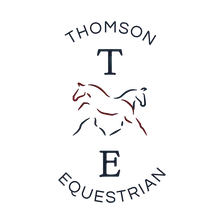
EOTW Canter Lead Reliability
EOTW Canter Lead Reliability
Introduction:
Welcome back to our "Exercise of the Week" series, tailored for classical jumping enthusiasts. This week, we're building on the last two exercises by focusing on canter depart reliability. This exercise tests your training, clarity of communication, and prepares your horse for successful flying changes.
Why It's Great:
Ensuring reliable canter departs is essential for clear communication between you and your horse and lays the groundwork for achieving flying changes. This exercise will help you test your training and refine your aids for more precise transitions.
Equipment List:
Nothing necessary, although a camera as per the last exercises may help you review.
Setting Up and How to Do It:
Setting Up:
Nothing specific is required, but using a camera to record your session may help you review and improve.
How to Perform the Exercise:
In an Arena:
Walk or trot around the arena. If your horse is not ready for walk-to-canter transitions, use the trot (though you'll have less preparation time).
After the short side, be ready as soon as your horse is heading straight down the long side. Ask for a counter canter depart. This means if you are travelling clockwise around the arena, you will ask for the left canter.
In an Open Space:
Pick a straight line with space in front of you and ask for a specific lead.
Tips for Success:
Ensure you can do both the previous exercises first! If you cannot turn straight onto a line, do not have a straight canter, and cannot do straight transitions, please review the last two weeks' exercises.
Challenge Yourself and Your Horse:
Once you can reliably achieve the requested canter lead on straight lines, ask for a counter canter strike off on a curved line.
More:
This is one of the very important missing pieces that people who train in an arena often miss. The horse already "knows" which direction they are travelling in, making it easier to anticipate the lead. If you ride in open spaces, you will find this (and flying changes) much less confusing for your horse.
If you have previously been taught to ask for canter in a corner, you may not realise there is a difference between a left and right canter aid. From now on, sit trot and kick are not enough. Go back to upward transitions and make your corners increasingly large curves. Ensure your inside leg is at the girth, your outside leg is behind the girth, and your position and aid to activate the horse from trot into canter is DIFFERENT for left and right.
If you start your own young horses and pay very close attention to these straightness and canter depart exercises from their very first times cantering under saddle, you will avoid many issues later on. My own horses have no problems with clarity of the asked canter lead, no problems with straightness, and no problem with flying changes. I believe this is because I have incorporated the principles from the previous three weeks' exercises from a very early age and helped the horse achieve straightness under saddle from their very first rides. I also do not have an arena ;)
Conclusion:
Incorporating this exercise into your training routine is a step towards achieving excellence in classical jumping while maintaining a strong, respectful bond with your horse. By ensuring reliable canter departs, you set a solid foundation for advanced movements, ensuring a smoother progression in your horse's education.
I'd love for you to try this canter depart reliability exercise, and share with me your experiences and any adaptations you've made to suit your horse's needs. Join our community on our private facebook group HERE, and share your journey using the hashtag #ClassicalJumpingChallenge. For more insights and tips, follow our blog and stay tuned for next week's exercise!
Thank you so much for being here!
Until next time,
Merindah

Copyright 2024 © Thomson Equestrian
Classical Jumping
Take the gear off so your horse will want to take off
Jumping strategies so that you can create a bond that is safe, trusting and willing...no matter what!
Classical Jumping
Take the gear off so your horse will want to take off
Jumping strategies so that you can create a bond that is safe, trusting and willing...no matter what!

Copyright 2025 © Thomson Equestrian

